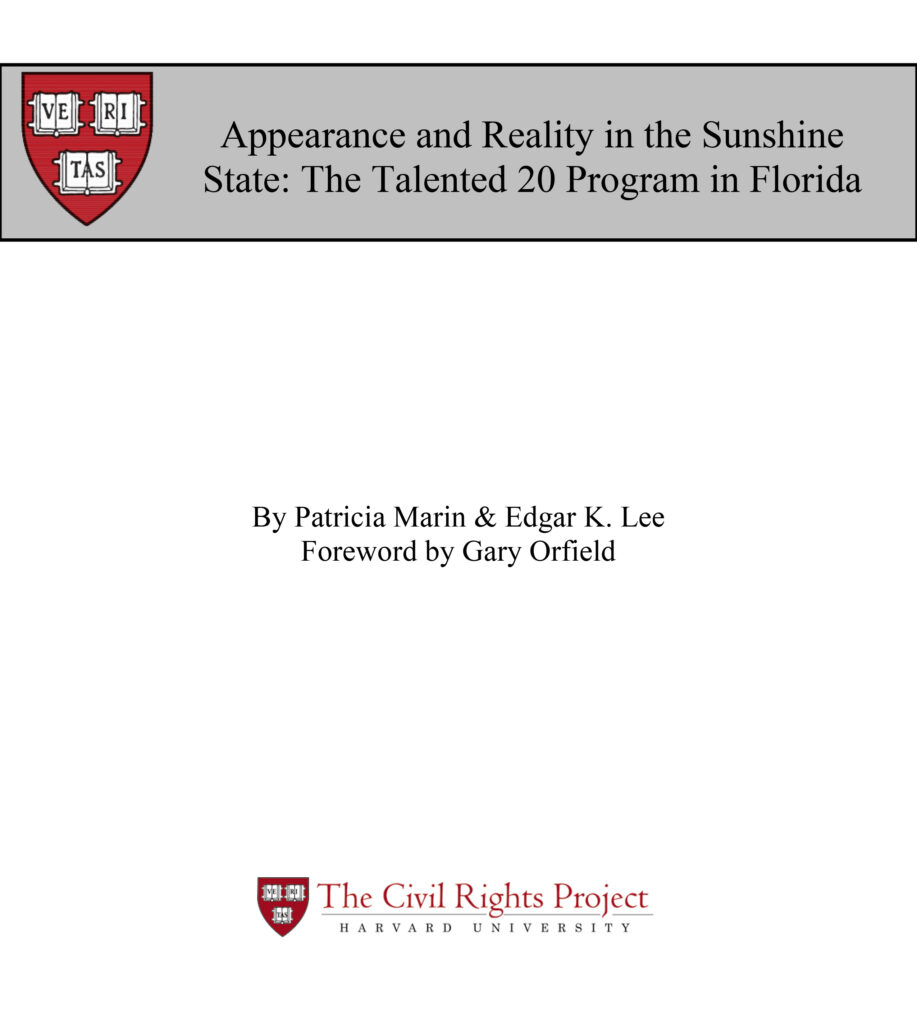Executive Summary
The Talented 20 Program in Florida guarantees the top 20 percent of public high school graduates admission to the state university system. To receive this guarantee, students in the top 20 percent of their class must complete the nineteen required credits and submit an SAT or ACT score. However, students are not guaranteed admission to the institution of their choice.
After a review of Florida state and institutional data and interviews with staff at five campuses of the Florida State University System and several Florida state agencies, this report describes the history, implementation, and effects of the Talented 20 Program.
The report concludes that Talented 20 Plan is, in fact, not race-neutral and is not an effective alternative to race-conscious affirmative action.
Major findings:
- The Talented 20 plan has led to the admission of very few students to the state university system who would not have been admitted under pre-existing, non-race-conscious rules.
- The Talented 20 plan provided no guarantee of admission to the two most highly selective campuses in the system, the University of Florida (UF) and Florida State University (FSU).
- Only an insignificant number of “newly eligible” minority students achieved access to the system.
- The Talented 20 includes far more White and Asian students than Blacks and Hispanics, the two groups most underrepresented at UF and FSU.
- The minimal success of the plan relies on race-attentive recruitment, retention, and financial aid policies.
These findings are explained in the report against the backdrop of the Florida education system. Florida has a rapidly expanding proportion of Black and Hispanic students, but large numbers are lost in the pipeline because of very high dropout rates. The Talented 20 plan was implemented in a state that has done a poor job educating its minority students; which had comparatively little race-conscious affirmative action in higher education admissions; and where the selective campuses have engaged in race-conscious affirmative action in many ways outside of admissions decisions.
In compliance with the UC Open Access Policy, this report has been made available on eScholarship:
